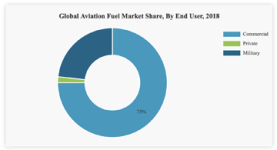It's pretty clear this is a political stunt, which is short sighted and unfortunate. However...
We are still running essentially the same fuel, same induction systems (carbs and mechanical fuel injection), and same magnetos that we were at the end of World War 2! I'm sorry guys, but we have to do better. You can buy lawn mowers with electronic fuel injection.
This is not any one person's fault, and i don't blame anyone for putting mags or a carb on their airplane. But as an industry we have let ourselves down. We've made tremendous strides in avionics and aerodynamics, but on the powerplant side the best we've been able to do are a few electronic ignitions and a couple experimental only EFI's.
Regardless of what the facts are on our environmental impact, or how you may feel personally, this bus is rolling. We can get on board and have a chance of helping steering it around some potholes....or get run over.
Hard to argue with the concepts, but using emissions as a forcing factor has been long in the making from the clean air act. All of my decades of engineering career were colored by the emissions reg progression. They were pretty orderly and funding was provided to develop best available technology (BAT). I worked many years meeting with EPA and CARB officials, they were tough smart and fair. Later, some regulations were finalized with a club. Shutting down assembly lines for weeks for surprise emissions audits - corporations were grabbed by the wallet.
This lead rule has been in the making for aircraft since 1971. Typically there are incentives to pull it forward, and all parties would see the benefits, but the club came to be used more frequently ( since around 2000) as technology advancements became asymptotic. If the Feds really had this as a priority it would have been incentivizing and developing appropriate technology for the last 5 decades, but alas, even they have larger cost/benefit ratios than this. A flea on the tail of the dog.
As stated this is a local thing, and having municipalities simply not offering a fuel as opposed to developing & influencing methodical, fact based change is chaotic and a unpleasant trend for an organized society. I would hope that there is a better plan. If the county can not see the benefits large enough to offer monetary incentives for a socially acceptable change they are poor planners and may not withstand the push back efforts from local and national groups.
Pointed out: many
are using alternatives now, garage engineers, and some pretty good. If 100LL and the 100XX alternative were at the pumps for a significantly lower price, then people would vote with their wallet for the new fuels and give them a try, I would. The transition could be painless and yield a lot of benefits. I certainly hope they modify the adversarial position and smooth the way. People don't like to be forced to do anything.
Besides, 100LL is not illegal, and just not offered, so an FBO could simply add an independent, private pump station with a club membership. Right? We certainly don't want this to end up with the demise of a family of 5 in a turbocharged twin from using an unproven (possibly illegal) fuel picked up on a cross country. The County shouldn't either.






